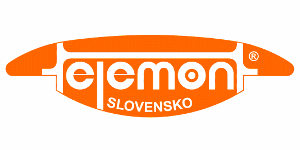| News by e-mail |
| Search on www.ATO.sk |
 |
 |
 |
 |
 |
 |
 |
 |
 |
 |
 |
 |
 |
 |
 |
|
|
Members |
|
|
|
ATO in media |
“.eu”: Europe’s new internet address opens for business on 7 December
Info from abroad | www.europa.eu.int
02.12.2005 | Read: 8666 | Discussion: 0
The Commission announced today that the “.eu” top-level domain, which enables businesses, public bodies and citizens to choose a pan-European Internet name for their web sites and e-mail addresses, opens for business on 7 December 2005. A “.eu” suffix enables users to project a Europe-wide presence, ambition or affiliation. It complements, but does not replace, national country codes such as France’s “.fr”, Poland’s “.pl” or the UK’s “.uk”. A sunrise period of 4 months will allow holders of prior rights – including businesses – to apply for the registration of domain names provided they are settled in the European Union. From 7 April 2006, the Registry will open its doors for applications from the general public. With the launch of .eu, the Commission lives up to the promise made at the Lisbon European Council in 2000 to give Europe’s Information Society an identity on the web under reliable EU rules.
“I expect Europe’s top level domain .eu to become similarly important as .com”, said Information Society and Media Commissioner Viviane Reding. “For businesses, .eu will extend their marketing reach, while protecting them under EU law against cybersquatters. As a citizen, a “.eu” address can help making your web presence or that of your school, university, or club more visible across the European Union. Europe’s new top level domain therefore offers a unique opportunity for modern online marketing across borders.”
A domain name is used to identify a computer or network on the Internet. Examples include ‘europa.eu.’ and the part following the ‘@’ in any email address. Top Level Domains (TLDs) are at the heart of the international Internet domain name system – they are the ‘suffix’ at the end of the domain name, and come in two basic categories:
- generic TLDs (gTLDs) – that are not tied to any country, such as “.com”, “.org”, “.net” and “.int”; and
- country code TLDs (ccTLDs), such as “.uk”, “.fr”, “.de”, etc.
The .eu top level domain is managed and operated by a private, not-for-profit Registry, EURid[1] selected by the Commission following an open call. EURid will register applications for the registration of domain names through a large net of accredited Registrars. The registration of domain names can only be requested through one of these accredited Registrars. A list of all registrars and the languages in which registration is offered, can be found on the following website: http://list.eurid.eu/registrars/
Initially, the possibility to apply for the registration of “.eu” names will be reserved to trade mark holders and public bodies (from 7 December 2005 to 6 February 2006). This possibility will then be extended to holders of other “prior rights”, such as company names or business identifiers (from 7 February to 6 April 2006). Finally, from 7 April 2006, anyone established in the European Union at all may apply to register a “.eu” domain name.
The “first come first served” principle will apply for any applications received during the initial 4 months phase and beyond. Therefore, if two applicants have a prior right on the same name, the Registry will register the application that it received first. The same principle will apply once the Registry opens its doors for everybody from 7 April 2006.
Further Information
EURid’s homepage: http://www.eurid.eu/en
Decision on “.eu” by ICANN (Internet Corporation For Assigned Names and Numbers): http://www.icann.org/announcements/announcement-23mar05.htm
European Commission fact sheet on “.eu”:
http://europa.eu.int/information_society/newsroom/cf/itemlongdetail.cfm?item_id=2331
[1] EURid is the working title for the non-profit consortium of 3 registries: DNS-BE (Belgium), IIT CNR (Italy) and NIC SE (Sweden).
| :: Banner :: | |
 |

